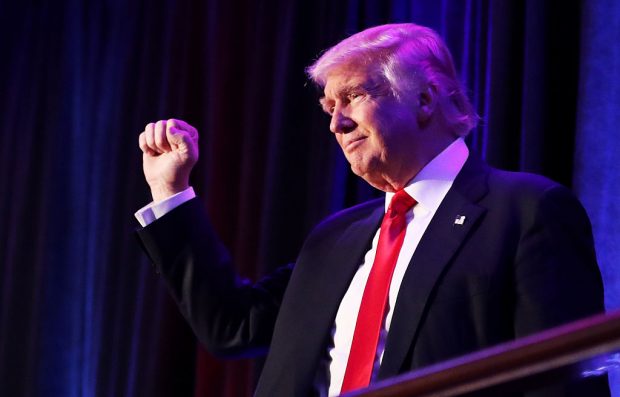 Donald J. Trump is a revolutionary no less than the late Fidel Castro. Why should military fatigues be de rigueur? It’s only a modern conceit that says someone dressed in a Brioni suit and sporting diamond cufflinks can’t be a revolutionary. Revolutionaries seek to overthrow the prevailing power structure by mobilising large masses of ordinary people for political struggle and political life. The president-elect is such a man.
Donald J. Trump is a revolutionary no less than the late Fidel Castro. Why should military fatigues be de rigueur? It’s only a modern conceit that says someone dressed in a Brioni suit and sporting diamond cufflinks can’t be a revolutionary. Revolutionaries seek to overthrow the prevailing power structure by mobilising large masses of ordinary people for political struggle and political life. The president-elect is such a man.
Who exactly is the target of Trump’s revolution? The sociologist C. Wright Mills was left wing without being Marxist. His conception of a dominant bloc was not so much a ruling class as a Power Elite. That is, a collection of privileged players sharing a mutually advantageous worldview that conflicted with the interests on of the wider population.
His 1956 list of likely suspects sounds a lot like a 2016 catalogue of culprits: CEOs of important companies, the corporate rich, notable families, intelligence and military figures, key members of the federal government and celebrities in the form of entertainers and media personalities. Mills’ Power Elite were hoary old reactionaries; today’s Left Power Elite are PC certified one and all.
Trump’s assault on the White House took the form of a populist narrative. Self-serving and duplicitous ‘insiders’, according to US-style populism, rig ‘the system’ and deceive the blameless ‘outsiders’, the ordinary people of America. Only decisive action taken by a populist saviour, on behalf of regular men and women, can wrest back control of the nation from corrupt cronies.
Throughout those lively rallies across the heartland, Donald Trump – with and without a discernible script – remained faithful to the customary populist storyline: ‘I have loved my life in business. But now, my sole and exclusive mission is to go to work for our country – to go to work for all of you…I am your voice.’
The secret to President-elect Trump capturing and advancing a nascent populist uprising went beyond his being – as daughter Ivanka put it – ‘blue collar with a big budget’.
The rise and rise of Donald Trump the politician also involved his ‘beautiful Twitter account’, the timely adoption of Ann Coulter’s treatise of treachery as delineated in Adios America: The Left’s Plan to Turn Our Country into a Third World Hellhole (2015) and, let us not forget, a spare $60-100 million to self-fund his bid to become GOP presidential candidate.
The key factor in all this was not just Trump’s wealth but also the source of that wealth – a business comprising of (mostly) American real estate and 23,000 (mostly) American workers. The billionaire forged an unexpected alliance with the working men and women of Ohio, Michigan, Wisconsin and Pennsylvania. He did so by skillfully distinguishing patriotic capitalism (as practised by him despite the Italian suits) from the supra-nationalism or internationalism of Wall Street.
Trump connected with a growing sense of betrayal experienced by ordinary people in the Midwest with this campaign-defining line: ‘Americanism, not globalism will be our creed.’ It was as if he were channelling Mao Zedong’s New Democracy-era defence of the national bourgeoisie against the comprador bourgeoisie. Multinational corporations retrenching local workforces in search of profits overseas were the new ‘running dogs of imperialism’.
In this context, at least, Hillary Clinton’s previous support for NAFTA and her initial endorsement of President Obama’s Trans-Pacific Partnership were unhelpful. She seemed to acknowledge this by reconfiguring herself as a free trade sceptic in her television debates with Democratic rival Bernie Sanders. But WikiLeaks was always there to tear down the facade: ‘My dream is a hemispheric common market, with open trade and open borders…’
Indeed, the ceaseless WikiLeaks revelations, along with Emailgate and Peter Schweizer’s Clinton Cash, played into Trump’s populist narrative, which depicted his adversary as an unscrupulous insider: ‘Hillary Clinton may well be the most corrupt person ever to seek the presidency of the United States.’
It is one thing to accuse the former secretary of state of being an integral part of a ruling political structure swindling American workers through ‘globalism’, but quite another for a Trump administration to pursue an America First agenda. As the CEO of United Technologies Corp., Gregory Hayes, insisted on the eve of the November 8 election, Carrier – a subsidiary of U.T. Corp. – could not compete with its rivals unless the company’s manufacturing base relocated from Indianapolis to Monterrey.
Hayes performed a post-election volte-face by promising to retain 1,000 Carrier manufacturing jobs in Indiana. Maybe it was the alleged $70 million inducement that did the trick or perhaps it was the threat of a 35 percent tariff on Mexican-made Carrier air-conditioners entering the United States. Or, just as likely, Trump took the advice of the other populist candidate in the 2015-16 election season, Democrat Bernie Sanders, and leveraged the CEO with a reminder that his corporation was a major supplier of military hardware to the government.
Whatever the case, the fundamentals of a globalised market remain in place: maximise corporate profits by exporting labour. President-elect Trump, in his Victory Tour, exulted in busting the Democrats’ ‘blue wall’ states of Pennsylvania, Wisconsin and Michigan: ‘We shattered that sucker’. But Trump’s newly forged alliance with America’s working class will not survive on the basis of a few ad hoc victories against market fundamentalism. And that ‘beautiful Twitter account’ will not be sufficient in itself in the hard years ahead. An economic renaissance needs to occur and that likelihood of that remains open to speculation.
What ought not to be in doubt is that Trump’s populist insurrection has nothing to do with White Nationalism and everything to do with Economic Nationalism. The president-elect’s $130 billion education scheme to transform inner-urban aspirations through the provision of school choice should have laid that one to rest. Putting America first means putting the divisiveness of Black Lives Matter, the Council of American-Islamic Relations and the National Council of La Raza last.
Trump’s America First agenda might be a mortal to blow to the divide-and-rule sectarianism of the Left Power Elite because citizens are being invited, regardless of colour, gender, creed, ethnicity or sexual preference, to participate in a veritable national liberation movement.
That, surely, is revolutionary. No wonder the PC reactionaries have been so desperate to demonise their nemesis as a xenophobic fascist and, now, the puppet of Vladimir Putin. How ironic that the Power Elite of 1956 and the Left Power Elite of 2016 should both play the Russian card.
Daryl McCann blogs at Daryl McCann Online.
Got something to add? Join the discussion and comment below.
Get 10 issues for just $10
Subscribe to The Spectator Australia today for the next 10 magazine issues, plus full online access, for just $10.

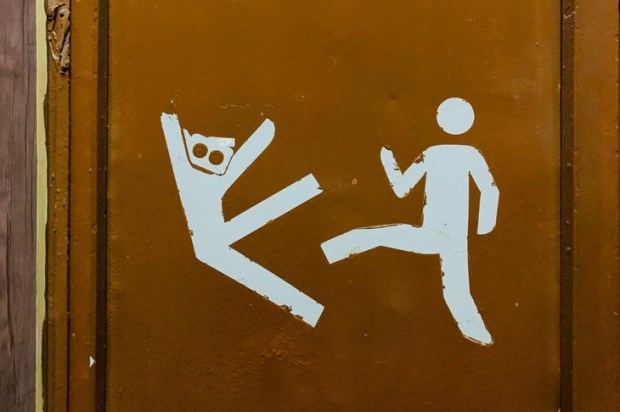
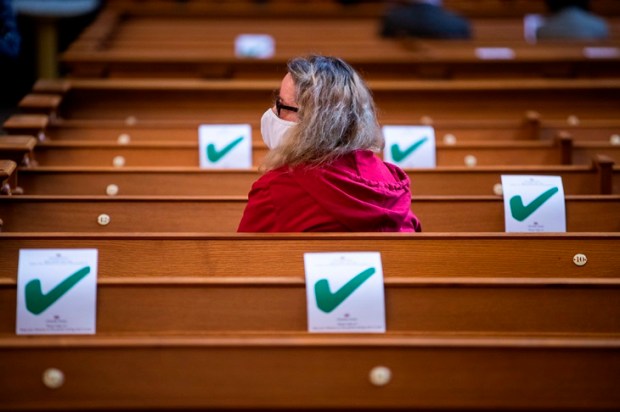

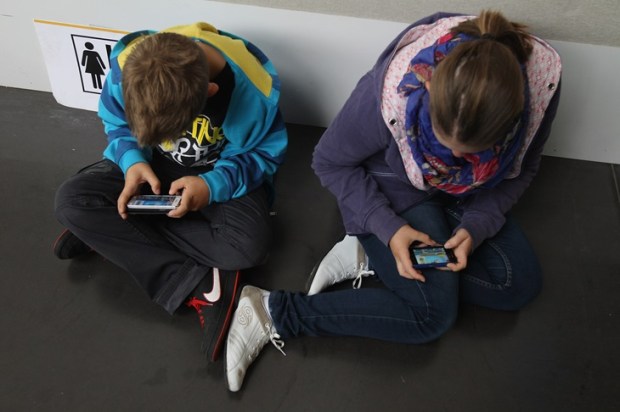
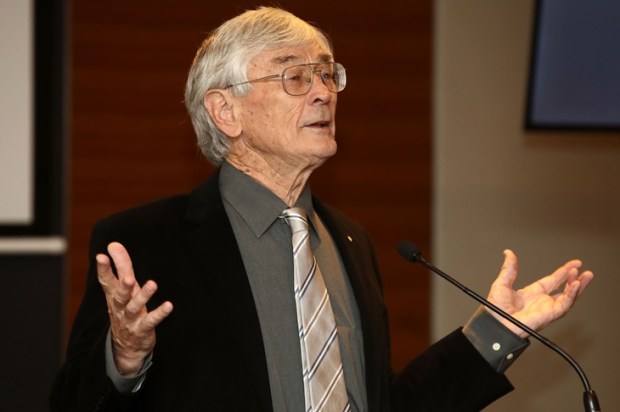
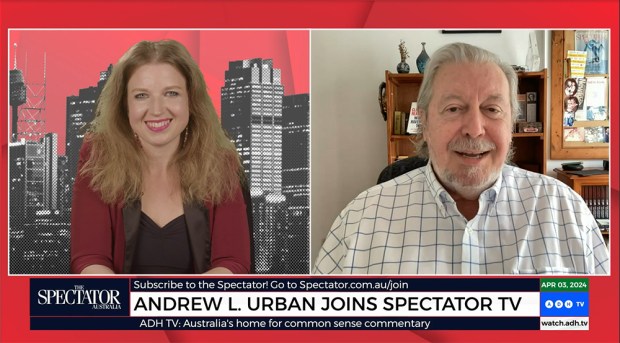


















Comments
Don't miss out
Join the conversation with other Spectator Australia readers. Subscribe to leave a comment.
SUBSCRIBEAlready a subscriber? Log in